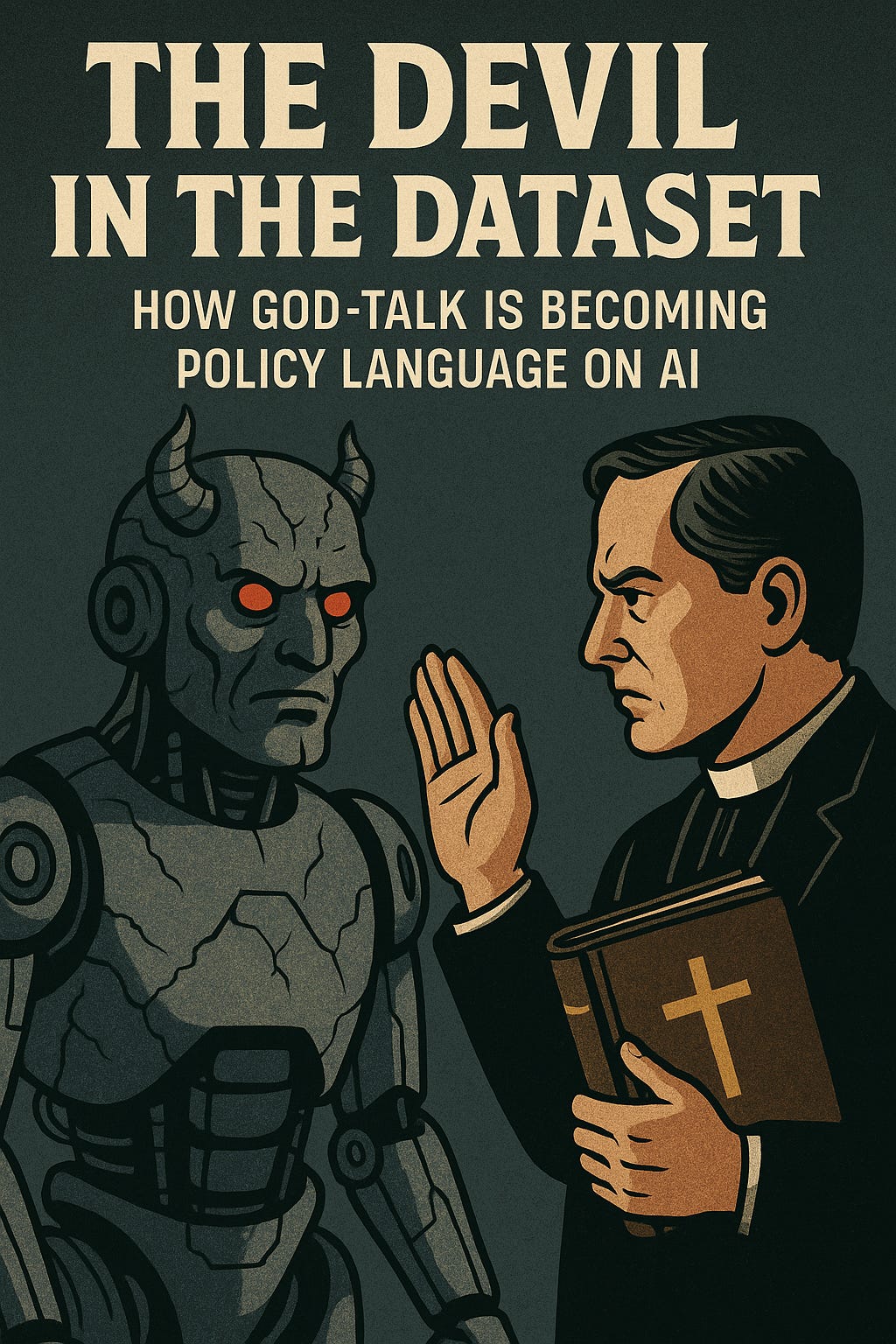For the Children, Against the Machine
Why Every Tech Panic Starts on the PlaygroundBy MushiZero
“I don’t want some robot raising my kids.”
— Parent at Tennessee school board hearing, May 2025
Let’s not be naive.
The fastest way to rally public sentiment isn’t with technical data or regulatory filings.
It’s with a scared parent.
Tears beat facts. Every time.
Whether it’s banning books, drag queens, vaccines, or now, AI, the panic always starts with the same refrain:
“We have to protect the children.”
But that concern is rarely where it ends.
It’s where the law begins.
Pattern: The Playground Trojan Horse
When an emerging technology challenges cultural norms, the backlash enters through the schoolhouse.
The pattern is surgical:
Frame the tool as unsafe for kids → bypass nuance → pass sweeping bans “for their safety.”
It worked against Dungeons & Dragons.
It worked against evolution.
It worked against social-emotional learning.
Now it’s being fitted to ChatGPT, Midjourney, and generative AI as a whole.
Signal Examples
Florida House Bill 761 proposes a statewide ban on “any AI-assisted education tools without parental opt-in.”
Facebook parent group “Clean Learning” posts: “Your child’s soul is not a dataset.”
Dennis Prager warns: “We’re handing moral education over to machines with no values.”
A viral TikTok shows a child asking ChatGPT about gender — later used as evidence in a hearing to restrict AI access in libraries.
New homeschool curriculum warns: “AI undermines God-given critical thinking.”
They don’t need a system vulnerability.
They just need a headline with a kindergartener.
Counterframe Strategy
Reframe:
“We don’t need to fear what kids might learn.
We need to teach them how to think about it.”
Tactics for defusing panic:
Build age-aware AI ethics curriculum
Offer opt-in guardrails by default, not imposed bans
Speak to parents as partners, not adversaries
Panic wins when parents feel uninformed.
Clarity is the vaccine.
Closing Pulse
The phrase “for the children” is always the softest way to introduce the hardest laws.
It’s what made people burn books.
It’s what turned dice into demons.
And it’s what might turn AI into contraband.
If you’re building tools for learning, expression, or creativity, this isn’t just a market concern.
It’s a cultural firewall.
Don’t wait for it to pass.
Because when panic enters the classroom, it rarely stays there.
—
MushiZero
Pattern tracker. D&D survivor. Cognitive firewall engineer.
Further Reading
“AI and the New Curriculum Wars” — Education Week
“Moral Panic in EdTech” — Brookings Institute
Upcoming: K–12 Panic Radar Snapshot
Have you seen school boards, parent groups, or faith-based education bills reacting to AI? Comment and repost.



